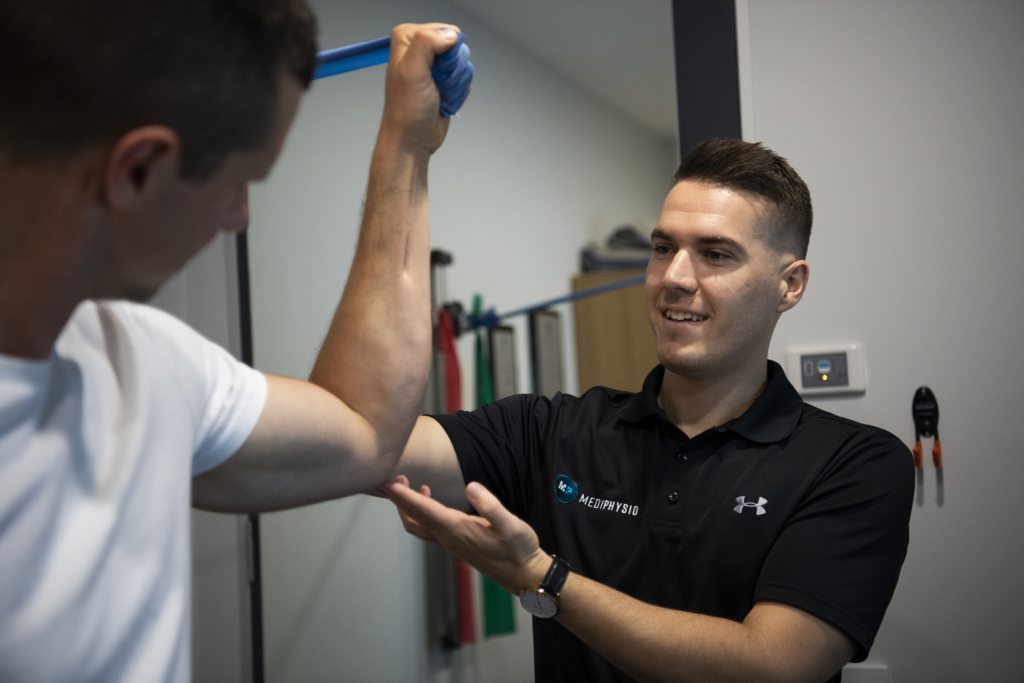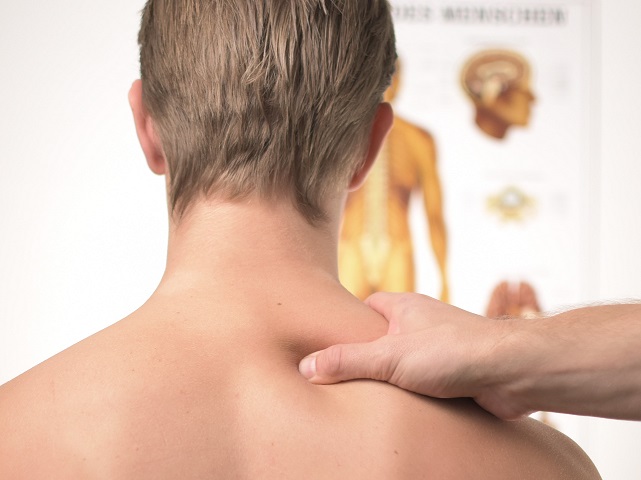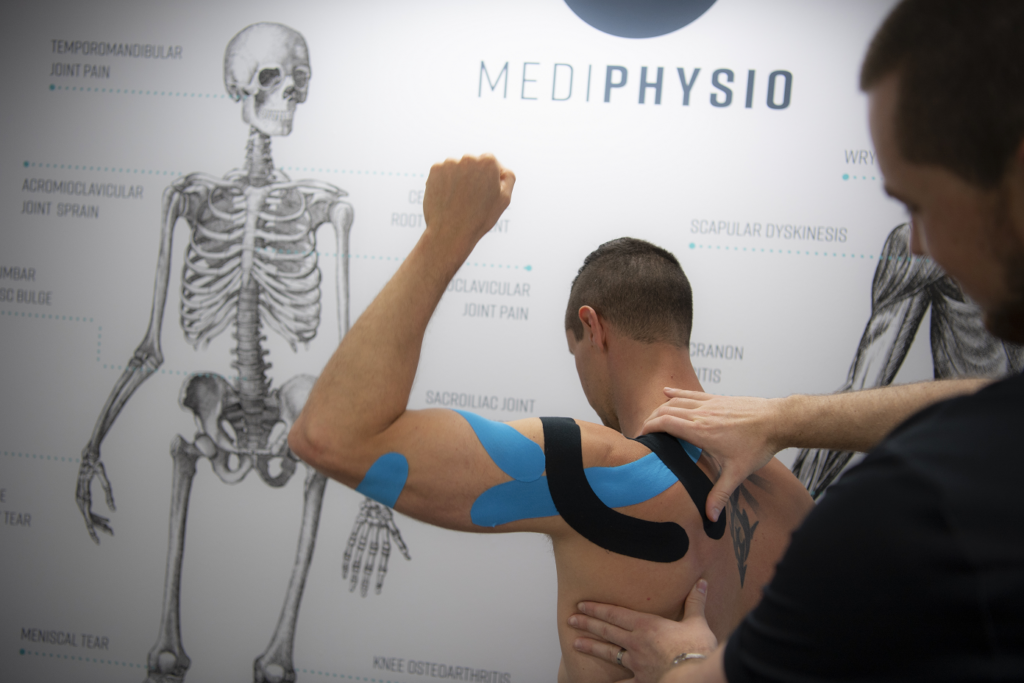The Shoulder: Diagnosis and Management (Overview)

Diagnosis
Do you experience shoulder pain? Do you experience symptoms like slipping, jamming, catching, instability, giving way and dead arm? Have you woken up with pain in your shoulder after sleeping funny? Have you had persisting pains for months with no idea how it started and why it won’t go away? Does this sounds like you… then keep reading, you are not alone!
We treat presentations like this daily and the good news is you don’t have to be in pain anymore! Our team of experienced physiotherapists at Mediphysio will take you through a thorough examination and assess any contributing factors of shoulder pain.
Contributing factors of shoulder pain
Some of these include; age, gender, dominant shoulder vs symptomatic shoulder, occupation, sporting history, type of symptoms, aggravating activities, history of onset of pain etc.
Some stats…
Shoulder pain is the second most frequent musculoskeletal reason for contacting a GP. 70% with a new episode are not recovered by 6 weeks while 50% complain of persistent problems after 6 months (Ottenheijm et al, 2011).
Despite this commonality and burden, rotator cuff related shoulder pain is poorly understood. The assessment is based within a pathoanatomic framework i.e. aiming to identify the specific structure at fault. The patient is taken through a range of physical examination tests and imaging. But this approach has been criticised, due to the limitations of tests and imaging and the poor level of association between structural failure and symptoms (Lewis, 2018).
What is rotator cuff related shoulder pain (RCRSP)?
Rotator cuff related shoulder pain (RCRSP) is an over- arching term that encompasses a spectrum of shoulder conditions including; subacromial pain (impingement) syndrome, rotator cuff tendinopathy, and symptomatic partial and full thickness rotator cuff tears.
Let’s keep the diagnosis simple!
In the context of this uncertainty, evidence suggests that the approach to diagnosis and classification should be kept simple. The aim of the assessment should be to:

1. Exclude the cervical spine (neck)
2. Exclude shoulder pain with restriction <45 degrees of external rotation
- Internal and external rotation of the arms (humerus) occurs at the shoulders, causing the elbow to rotate outwards or across the body
3. Screen for instability.
- This could be anterior (humerus sliding forward in joint), posterior (humerus sliding backwards in the joint), inferior (humerus sliding downwards in the joint) or multi-directional.
4. Reproduce pain/weakness with resisted testing
- When the practitioner applies a small force in certain directions of movement around the shoulder to test certain muscles etc for pain with load.
Management
The aim of treatment is to achieve symptom free shoulder movement and function.
Current research provides considerable confidence for people diagnosed with RCRSP to expect an similar outcome to surgical intervention with a well-structured and graduated exercise program. They also have the additional generalised benefits of exercise, less sick leave, a faster return to work and reduced health care expenses. Win win!

Surgery or exercise?
In the research it shows surgery does not offer additional benefit at 1, 2 and 5-year follow ups. Not only that it shows that exercise significantly reduces the need for surgery.
It has been supported that sub-acromial decompression surgery with RC repair, is not associated with improved outcomes over exercise alone in partial or full-thickness atraumatic cuff tears. Furthermore, patients of varying age, duration of symptoms and severity of pain and disability can achieve significant outcomes.
How many sessions can a patient expect to have?
Formal treatment sessions range between 6 and 12 sessions in these studies.

In the highly irritable shoulder, strategies to reduce pain are important. It commonly includes advice and education in relation to reducing or modifying the activity of the affected limb. This assists with reducing pain flares. Manual therapy and taping can also be effective at this stage. Evidence suggests sustained isometric contractions performed in the direction of the pain and weakness may help control pain.
Progression to exercise
Once the irritability has settled, or if the initial presentation was one of low irritability, then the graduated rehabilitation program progresses.
Specific resisted shoulder rotation exercises are the most relevant exercises to treat this condition, considering that these movements tend to be the ones mostly impaired. They should be specific to the patient’s functional impairment and gradually loaded with progressions through the available range of motion. Modifications of appropriate repetitions, intensity, volume and direction are all considered.
Improving motor control of the humeral head can be achieved by increasing the complexity and speed of exercises. Achieving scapular control is recommended before progressing rotator cuff and scapular exercises.
Addressing lifestyle factors such as smoking, diet, sleep and stress are vitally important. Outcomes may be further enhanced by considering the influence of the musculoskeletal chain on shoulder function also.
PHYSIO TREATMENT
Acute Management:
-Relative Rest
-NSAIDs if necessary
-Manual Therapy
-Taping
-Low load Isometric exercises
Sub-Acute Management:
-Graduated Exercise programme
-Motor Control Exercises
*Control Scapulathoracic Joint and Humeral Head
-Rotator cuff Strengthening
*Build Endurance
*Strength and Power
*Neuromuscular Control
*Proprioception
Late Stage Rehab Goals:
-Return to sport & Work (full duties)
Take home message
It is essential that clinical management ensures adequate movement, endurance, power, and strength throughout the body, appropriate to the individual’s needs. There isn’t unfortunately a one size fits all exercise program when it comes to the shoulder, and often we see clients performing exercises incorrectly or with too much load and actually aggravating some conditions of the shoulder more.
We always recommend a physical examination with a professional to make sure you receive a tailored program specific to your shoulder and functional needs. Contact us today!
References:
1) Lewis JS. Rotator cuff tendinopathy/subacromial impingement syndrome: is it time for a new method of assessment? British Journal of Sports Medicine 2009;43:259-64 2) Ottenheijm, R.P., Joore, M.A., Walenkamp, G.H. et al. The Maastricht Ultrasound Shoulder pain trial (MUST): Ultrasound imaging as a diagnostic triage tool to improve management of patients with non-chronic shoulder pain in primary care. BMC Musculoskelet Disord12, 154 (2011) doi:10.1186/1471-2474-12-154


Sorry, comments are closed for this post.